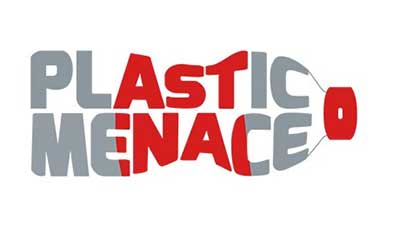Relevance: GS-3: Conservation, Environmental Pollution and Degradation, Environmental Impact Assessment.
Key Phrases: Extended producer responsibility, low density polythene
Why in news?
- Draft regulations on EPR released
Analysis:
What is status of plastic menace?
- India is third largest consumer of materials after China and USA. Economic survey estimates that India's demand for materials will double by 2030
- Per capita consumption of plastic is projected to go up from 11 kg in 2015 to 20 kg in 2022-FICCI data,43 percent of that is single use plastic-US tops with 109kg
- 2019 report of center for international environment law suggests that by 2050, GHG emissions from plastic would reach 56GT ,15% of remaining carbon budget
- No single definition for single use plastic-makes 30% of world plastic-polythene, styro foam
- India’s per capita consumption of plastic is much lower than US and China but 10 thousand ton left uncollected every day
Pitfalls of this menace
- Marine life-micro plastics in intestines of deep dwelling ocean mammals-also affects productivity of primary producers in marine food pyramid
- Single use plastics make up on average 50 percent of beach litter
- Dioxin-byproduct of manufacturing process is believed to be passed on through breast milk to infants-burning of plastics releases this
- ‘Plasticrust’-rock formation-thin coating of plastic growing on rocks-disturbing food chain by polluting feed of mollusks
- Arrests recharge of groundwater aquifers for its impervious nature
- Disturbs soil microbe activity, also animals eat and choke
How is this government tackling this?
- Extended producer responsibility; responsibility of street vendors-not to provide such carry bags
- Department of industrial promotion to ensure all cement factories use plastic as fuel
- Plastic waste management rules 2016-defines minimum thickness of plastic at 50 microns increasing cost
- MP HC instructs state to ban single use plastic
Are these efforts sufficient?
- PWM rule which fixed a deadline of 6 months for producers to arrange for recovery of waste in partnership with state urban development department has made little progress
- Plastic is not marked with symbols (1 for pet,4 for low density) to facilitate recycling
- CPCB said companies were marketing carrying bags as compostable without any certification
- Found even in remote Nicobar Islands-plastic litter from many foreign origin countries

Plastic waste management
Are EPR rules well thought out?
- EPR requires the manufacturer of a product, or the party that introduces the product into the community, to take responsibility for its life cycle
- An FMCG company should not only account for the costs of making, packing and distributing a packet of chips, but also for the collection and recycling/reuse of the packet
- By failing to mention waste pickers or outlining mechanisms for their incorporation under EPR, the guidelines are retrogressive. Between 1.5 and 4 million waste pickers in India work without social security, health insurance, minimum wages or basic protective gear.
- EPR guidelines are limited to plastic packaging. While a large part of plastics produced are single-use or throwaway plastic packaging, there are other multi-material plastic items like sanitary pads, slippers, and polyester
Way ahead
- Government should redo the consultation process for the draft guidelines and involve informal workers.
- The scope of plastics covered by the guidelines could be altered to exclude those plastics which are already efficiently recycled and to include other plastic and multi-material items.
- End-of-life processing technologies should be closely evaluated, based not only on their health and environmental impacts, but also on the implications for continued production of low-quality and multi-layered plastics.
- Plastic pact model currently active in UK, Australia-it is a pact which brings everyone together across the plastic value chain to transform the plastic packaging by redesign, innovation, reuse, collection-it can support Extended Producer Responsibility.
- Recycling plastic into new products extends their life and provides substitute for virgin materials: Recovering materials from garbage should be a high priority.
- Online retailers should be compelled to follow extended producer responsibility and take back the plastic waste from consumers: They may form waste cooperatives and employ informal waste pickers. Consumers will respond readily when incentivized.
Source: The Hindu









